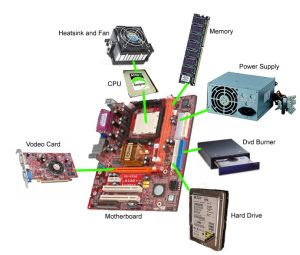Tonight's class was split into two. The first half we discussed Backups, and the second half we discussed Simple Home Networks.
Why Backup your Data?
Superheroes
need it, police rely on it and everyone that uses a computer should use some
form of it. In the world of mainframes and microchips it's called data backup
or data recovery and it can mean the difference between a slight computer
setback and living through your own electronic apocalypse.
Let's
face it; our computers are a bigger part of life than ever before. We shop,
work and play using computers. They've replaced stereos, encyclopaedias, even
the mailman. They've become journals, photo albums and canvases for our art.
But
computers aren't perfect. Files become corrupt, motherboards malfunction, CPUs
call it quits taking our precious data with them.
The
best defence is data backup
software. Backing up data is vital for businesses; lost information can cause a
major crisis or worse, lead to business
failure. Individuals who don't backup computer data run the same risk. While
this may not cause financial ruin, it can certainly be frustrating and even
heart-breaking. So why do so few of us practice data backup?
Here
are the common excuses:
"I'm
too busy to backup my computer." We are busy; work, family and friends fill our days and leave us
little time for boring things like computer maintenance. But today's backup
software manufacturers make it easy. Through scheduled backups, your system can
automatically perform a backup that fits your needs at an interval you choose -
without interrupting life.
"I
don't know how to backup data." Like preparing for a natural disaster, most of us understand how
important data backup is, but don't know where to start. A big step is deciding
how you are going to store the data you backup.
One
option is Removable Backup Media, but this only narrows the field a little. You
could buy a million 3.5" discs or perhaps invest in a larger-capacity
external Zip drive. You could take the plunge into writeable CDs or stretch out
your legs with the help of an external hard disk drive.
"My
computer won't crash." You've had your computer this long and haven't had problems so
far why worry about computer backup now? Data backup is about protecting your
data's future, but with computers, it isn't if you crash, it's when you crash.
In
today's high-tech world of sneaky spyware and venomous viruses, you are in more
danger of data loss than ever before. Computer viruses grew by as much as 11% during
2003 alone.
Like
tires on your car, the electronic circuits your computer rides on will
eventually wear down and blow out. When this happens, you can either grieve at
your loss or simply restore your data with data backup software.
So with
that said, Windows Vista and Windows 7 have the built in Backup and Restore
Centre to take care of this painlessly for you.
Networking in the Home.
Networking in the Home.
Computer networks help users on the network to share the resources and in communication. Can you imagine a world now without emails, online news papers, blogs, chat and the other services offered by the internet?
The following are the important benefits of a computer network.
File sharing: Networking of computers helps the users to share data files.
Hardware sharing: Users can share devices such as printers, scanners, CD-ROM drives, hard drives etc.
Application sharing: Applications can be shared over the network, and this allows to implement client/server applications
User communication: Networks allow users to communicate using e-mail, newsgroups, and video conferencing etc.
The following are screen shots from the presentation that was shown in class:


_2.png)







 As you know, the Control Panel in
As you know, the Control Panel in 















